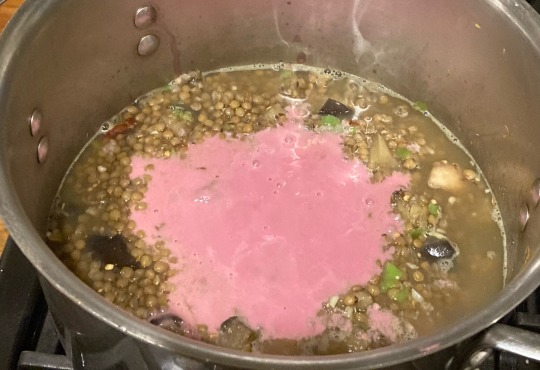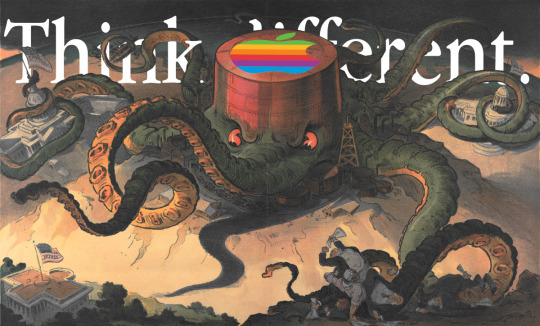#garden tool manufacturer
Explore tagged Tumblr posts
Text

Suitable for garden cleaning light leaf blower
0 notes
Text
Geotextile Fabrics: The Ultimate Solution for Soil Stabilization & Erosion Control

Geotextile fabrics are a game-changer in modern construction and environmental projects. These permeable materials enhance soil stability, prevent erosion, and improve drainage systems. Used in road construction, landscaping, and coastal protection, geotextiles act as a protective layer, reducing soil displacement while allowing water to pass through. Whether you’re working on a large infrastructure project or a simple backyard improvement, choosing the right geotextile fabric ensures durability and longevity. Their versatility makes them ideal for filtration, separation, and reinforcement applications. With advancements in technology, geotextiles now come in various materials like woven, non-woven, and knitted fabrics to suit different needs. If you're looking for an eco-friendly and cost-effective way to improve ground stability, geotextile fabrics are your best bet. Learn how these innovative materials can enhance your next project while saving time and costs.
Why Geotextile Fabrics Are Essential for Road Construction and Drainage Systems?
Geotextile fabrics play a vital role in road construction and drainage management by preventing soil erosion and enhancing durability. These high-performance materials improve load distribution, ensuring roads last longer with minimal maintenance. In drainage applications, geotextiles act as filters, preventing soil particles from clogging drainage pipes while allowing water to flow freely. This not only enhances water management but also reduces infrastructure costs in the long run. Available in woven and non-woven types, geotextiles are tailored to meet different engineering needs. Contractors and engineers rely on them to build strong, stable foundations for highways, railways, and embankments. Whether you're working on a major construction project or need a reliable drainage solution, geotextile fabrics provide unmatched efficiency and sustainability. Investing in these fabrics ensures your structures remain resilient against natural forces, offering long-term benefits in infrastructure development.
Woven vs. Non-Woven Geotextile Fabrics: Which One Is Right for Your Project?
Choosing between woven and non-woven geotextile fabrics can significantly impact the success of your project. Woven geotextiles, made from strong synthetic fibers, are ideal for reinforcement and load-bearing applications, such as road construction and embankments. They provide excellent tensile strength, making them perfect for areas prone to heavy loads. On the other hand, non-woven geotextiles are designed for filtration, drainage, and erosion control. Their permeable structure allows water to pass through while preventing soil displacement, making them ideal for landscaping and drainage projects. Understanding the differences helps you select the right material based on your specific needs. Whether you need to reinforce a roadway or enhance water flow in a drainage system, using the correct geotextile fabric ensures durability and cost-effectiveness. Make an informed choice today and boost the efficiency of your construction or environmental project with the best geotextile solution.
The Environmental Benefits of Using Geotextile Fabrics in Construction
Geotextile fabrics not only improve construction efficiency but also offer significant environmental benefits. These eco-friendly materials reduce soil erosion, protect natural resources, and enhance water filtration. By stabilizing slopes and preventing sediment runoff, geotextiles help maintain ecological balance in construction zones. They also minimize the need for excessive concrete and other non-renewable materials, making them a sustainable choice for infrastructure projects. In agricultural applications, geotextiles promote healthy soil retention, improving crop yields while preventing land degradation. Additionally, their use in landfills ensures proper waste management by acting as a protective barrier between waste and groundwater. With growing concerns about climate change and environmental preservation, adopting geotextile solutions is a responsible choice for builders and engineers. Whether for roads, embankments, or drainage systems, geotextile fabrics contribute to a greener future while enhancing construction durability and efficiency.
How Geotextile Fabrics Enhance Strength and Longevity in Infrastructure Projects?
Geotextile fabrics play a crucial role in reinforcing infrastructure projects, providing superior strength and longevity. Used in roads, railways, and embankments, these fabrics prevent soil displacement and increase structural stability. Their high tensile strength allows them to withstand heavy loads, reducing maintenance costs and extending the lifespan of constructions. In water management projects, geotextiles act as effective filters, ensuring proper drainage and preventing sediment accumulation. This leads to improved flood control and soil conservation. By incorporating geotextile fabrics, engineers and contractors can enhance the durability of highways, bridges, and retaining walls. These materials are also resistant to chemicals and weather conditions, making them a reliable solution for long-term projects. Whether you're working on a small-scale development or a large infrastructure project, geotextile fabrics offer an economical and efficient way to strengthen foundations and improve overall construction performance.
Premium Geotextile Fabrics for Your Projects – Siraj Tech Limited
Looking for high-quality geotextile fabrics for your construction, landscaping, or drainage projects? Siraj Tech Limited offers a premium selection of geotextile solutions designed to enhance soil stability, erosion control, and drainage efficiency. Our woven and non-woven geotextiles are engineered for durability, making them ideal for roads, embankments, and environmental applications. With years of expertise in the industry, we provide cost-effective solutions tailored to meet your project requirements. Our products are made from top-grade materials, ensuring longevity and performance in even the most demanding conditions. At Siraj Tech Limited, we prioritize quality, reliability, and customer satisfaction. Whether you need bulk orders or specialized geotextile solutions, we are here to support your needs with expert guidance and competitive pricing. Contact us today to learn how our geotextile fabrics can enhance your next project and provide long-lasting benefits for your infrastructure needs.
Key Factors to Consider When Choosing Geotextile Fabrics for Your Project
Selecting the right geotextile fabric requires understanding key factors such as material type, permeability, and strength. Woven geotextiles offer superior reinforcement for heavy-load applications like road construction, while non-woven fabrics excel in drainage and filtration projects. Another important factor is UV resistance, which determines the longevity of the material in outdoor environments. Additionally, considering soil type and project conditions helps ensure optimal performance. High-quality geotextile fabrics prevent soil erosion, reduce maintenance costs, and enhance overall infrastructure durability. Whether for slope stabilization, landscaping, or flood control, using the correct geotextile ensures efficient water flow and soil retention. By evaluating load-bearing capacity, filtration needs, and environmental conditions, you can make an informed decision for long-term success. Investing in the right geotextile fabric not only improves construction efficiency but also contributes to sustainable and cost-effective project development.
#Geotextile products#Geo bags#Garden materials#Geo grow bags#Geosheets#Geotubes#Natural coir products#Tin shed house design#One-storey house design#Duplex house design#Three-storey house design#Factory design#Agro farm design#Industry shed design#Civil engineering tips#Geotextile applications#Home decor ideas#Agriculture tips#Geotextile manufacturers#Erosion control bags#Coastal protection bags#Geotextile sandbags#Flood protection bags#Geosynthetic bags#Soil reinforcement bags#Environmental sand containers#Shoreline stabilization bags#Landscaping supplies#Horticulture tools#Gardening accessories
0 notes
Text
Room design for small space, house ideas available now for rent a bran new selfcontained apartment already shredded with wardrobe massive big space located at Nta road before ozuoba close to the road with stable light daily in port Harcourt city rivers state Nigeria
#abuja#rivers state#vietnam#wike#lagos#nigeria#bangladesh#nysc#youtube#portharcourt#odili#house tour#container store#container home#container manufacturer#container gardening#tools#sussex#apple#container shipping#gardens#windows
0 notes
Text
Oil Palm Sickles OPS-Pro manufactured by Ralph Martindale

The Ralph Martindale Oil Palm Sickles OPS-Pro come equipped with a rubber edge protector and plastic sheath, ready for immediate use without any initial sharpening. Featuring a polished blade and gold-painted tang, these sickles are marked with the OPS-PRO hologram and “crocodile” logo. With a total length of 566 mm, each box contains 24 pieces, ensuring a packing weight of 22.3 kg.
" https://ralphmartindale.com/product/oil-palm-sickles-ops-pro/ "
#oil palm sickles#uk#thailand#united kingdom#ghana#ralph martindale#gardening tool#farming tools#nigeria#manufacturers
1 note
·
View note
Text

Usage of Cane Choppers in Sustainable Agriculture | Tata Agrico
Can hand harvesting of sugarcane with cane choppers aid in sustaining the Indian agricultural sector? Learn more here. https://www.tataagrico.com/blog-post/the-role-of-cane-choppers-in-sustainable-agriculture/
#cane chopper price#garden tools#cane chopper online#cane choppers usage#cane choppers#garden tools online#best cane chopper#agriculture tools#agriculture hand tools#tata agrico garden tools#garden tools manufacturers in india#agriculture tools online#agri tools online#tata garden tools#agriculture tools shop near me#best garden tools brand india#gardening tools#tata agrico tools#tata agriculture products
0 notes
Text

#power tools#power tools suppliers#power tools manufacturer#abrasives#abrasive tools#industrial abrasives#hands tools#hardware tools#construction tools#industries tools#hardware accessories#garden tools#garden supplies#yard equipment#water pumps#diesel and gasoline engines#gasoline engines#diesel engines#car engine parts
0 notes
Link
Garden Tools Manufacturers in India We are manufacturers of quality garden tools, offer a wide range of products varying from garden spades, shovels, hoes, forks etcis a leading manufacturer Of Garden Tools, Agricultural and Construction Tools. Find more on
0 notes
Text
💖 edwards-vamprincess414 Follow
Oh my fucking god I’m literally fucking shaking I went to Home Depot with my mom and this guy was just casually walking around with a fist full of fucking stakes what the fuck
🎃 headless-hoe-mann Follow
tfw there’s gardening supplies at the gardening supply store
💖 edwards-vamprincess414 Follow
We have the right to feel safe in public just as much as humans do.
🎃 headless-hoe-mann Follow
Harbor Freight literally rebranded half of their stores to Harbor Frights specifically for monsters just go there
👯♀️ monsterous-ally384 Follow
wait I thought Harbor Fright was canceled for killing that werewolf with a silver screwdriver
🐶 were-wussy337 Follow
What??? There was an issue with manufacturing and literally a milliliter of silver got into a shipment of their (hand saws?). They’ve issued an apology, recalled the line, and won’t be renewing their contract with the factory.
And the werewolf was literally fine he just gave HF a heads up about the silver and they gave him like a position in their monster relations department where tf are you getting your info 😭
💖 edwards-vamprincess414 Follow
Not all of us are privileged enough to live by a Harbor Fright
🧛 lady-and-the-vamp11 Follow
You can’t order tools online ??
💖 edwards-vamprincess414 Follow
Our delivery driver’s too scared of our house and we don’t have a mailbox and I can’t GET a mailbox because the only place I can get a mailbox is HOME DEPOT!!!
🩸 vamp-staamp Follow

🏡 witch-of-the-suburb08 Follow
Maybe ask one of your human friends to pick up some things for you?
💖 edwards-vamprincess414 Follow
I don’t have any human friends
🎃 headless-hoe-mann Follow
Huh op I wonder why
2K notes
·
View notes
Text
Setting-Dependent Sudden-Onset Object Impermanence Syndrome (SDSOOIS) is a recently-discovered, yet (now that it's been named) widely diagnosed disorder commonly present in those employed in skilled shop trades (e.g. automotive repair, machining, assembly, woodworking,) in which sufferers enter their workplace and completely lose any and all sense of object permanence for any number of crucial items.
In certain cases, especially important pieces of equipment (A machinist's calipers, a mechanic's ratchet, a mason's trowel, etc) remain mentally accessible, however most other specialized tooling and materiel completely vanish to the mind's eye when no longer in sight. This has caused, over the years since the advent of the industrial era, roughly $2.3Q in losses globally due to duplicate tooling purchases, botch jobs due to forgetting that the requisite adapter is on that shelf over there and thus slapping a hoseclamp on there and gitt'n'er'dun, incorrect structural brackets resulting in structural collapse, lost 10mm sockets, etc. The Dartmouth grad student who drew the connection between SDSOOIS and the infamous 10mm socket problem has been awarded a philly cheesesteak, a blunt, some head, and a $1.5b grant to develop a machine-learning tool to locate the hidden cache of likely-near-infinite 10mm sockets in each auto-shop in the hopes of bolstering American domestic steel reserves.
Studies are still inconclusive as to whether similar behavior exhibited by manufacturing welders are SDSOOIS or simply symptomatic overlap with garden-variety galvanic brain damage.
160 notes
·
View notes
Text

Professional garden tool leaf blower
0 notes
Text
Paywall-free version
On the outskirts of Austin, Texas, what began as a fringe experiment has quickly become central to the city’s efforts to reduce homelessness. To Justin Tyler Jr., it is home.
Mr. Tyler, 41, lives in Community First! Village, which aims to be a model of permanent affordable housing for people who are chronically homeless. In the fall of 2022, he joined nearly 400 residents of the village, moving into one of its typical digs: a 200-square-foot, one-room tiny house furnished with a kitchenette, a bed and a recliner.
The village is a self-contained, 51-acre community in a sparsely populated area just outside Austin. Stepping onto its grounds feels like entering another realm.
Eclectic tiny homes are clustered around shared outdoor kitchens, and neat rows of recreational vehicles and manufactured homes line looping cul-de-sacs.
There are chicken coops, two vegetable gardens, a convenience store, art and jewelry studios, a medical clinic and a chapel.
Roads run throughout, but residents mainly get around on foot or on an eight-passenger golf cart that makes regular stops around the property.
Mr. Tyler chose a home with a cobalt-blue door and a small patio in the oldest part of the village, where residents’ cactus and rock gardens created a “funky, hippie vibe” that appealed to him. He arrived in rough shape, struggling with alcoholism, his feet inflamed by gout, with severe back pain from nearly 10 years of sleeping in public parks, in vehicles and on street benches.
At first, he kept to himself. He locked his door and slept. He visited the clinic and started taking medication. After a month or so, he ventured out to meet his neighbors.
“For a while there, I just didn’t want to be seen and known,” he said. “Now I prefer it.”
Between communal meals and movie screenings, Mr. Tyler also works at the village, preparing homes for the dozen or more people who move there each month.
In the next few years, Community First is poised to grow to nearly 2,000 homes across three locations, which would make it by far the nation’s largest project of this kind, big enough to permanently house about half of Austin’s chronically homeless population.
Tiny-home villages for people who have been homeless have existed on a small scale for several decades, but have recently become a popular approach to addressing surging homelessness. Since 2019, the number of these villages across the country has nearly quadrupled, to 124 from 34, with dozens more coming, according to a census by Yetimoni Kpeebi, a researcher at Missouri State University.
Mandy Chapman Semple, a consultant who has helped cities like Houston transform their homelessness systems, said the growth of these villages reflects a need to replace inexpensive housing that was once widely available in the form of mobile home parks and single room occupancy units, and is rapidly being lost. But she said they are a highly imperfect solution.
“I think where we’re challenged is that ‘tiny home’ has taken on a spectrum of definitions,” said Chapman Semple. Many of those definitions fall short of housing standards, often lacking basic amenities like heat and indoor plumbing, which she said limits their ability to meet the needs of the population they intend to serve.
But Community First is pushing the tiny home model to a much larger scale. While most of its homes lack bathrooms and kitchens, its leaders see that as a necessary trade-off to be able to creatively and affordably house the growing number of people living on Austin’s streets. And unlike most other villages, many of which provide temporary emergency shelter in structures that can resemble tool sheds, Community First has been thoughtfully designed with homey spaces where people with some of the highest needs can stay for good. No other tiny home village has attempted to permanently house as many people.
Austin’s homelessness rate has been rapidly worsening, and the city’s response has whipped back and forth... In October [2023], the official estimate put the number of people living without shelter at 5,530, a 125 percent increase from two years earlier. Some of that rise is the result of better outreach, but officials acknowledged that more people have become homeless. City leaders vowed to build more housing, but that effort has been slowed by construction delays and resistance from residents.
Meanwhile, outside the city limits, Community First has been building fast. [Note from below the read more: It's outside city limits because the lack of zoning laws keeps more well-off Austin residents from blocking the project, as they did earlier attempts to build inside the city.] In a mere eight years, this once-modest project has grown into a sprawling community that the city is turning to as a desperately needed source of affordable housing. The village has now drawn hundreds of millions of dollars from public and private sources and given rise to similar initiatives across the country.
This rapid growth has come despite significant challenges. And some question whether a community on the outskirts of town with relaxed housing standards is a suitable way to meet the needs of people coming out of chronic homelessness. The next few years will be a test of whether these issues will be addressed or amplified as the village expands to five times its current size.
-via New York Times, January 8, 2024. Article continues below (at length!)
The community versus Community First
For Alan Graham, the expansion of Community First is just the latest stage in a long-evolving project. In the late 1990s, Mr. Graham, then a real estate developer, attended a Catholic men’s retreat that deepened his faith and inspired him to get more involved with his church. Soon after, he began delivering meals as a church volunteer to people living on Austin’s streets.
In 1998, Mr. Graham, now 67, became a founder of Mobile Loaves and Fishes, a nonprofit that has since amassed a fleet of vehicles that make daily rounds to deliver food and clothing to Austin’s homeless...
Talking to people like Mr. Johnston [a homeless Austin resident who Graham had befriended], Mr. Graham came to feel that housing alone was not enough for people who had been chronically homeless, the official term for those who have been homeless for years or repeatedly and have physical or mental disabilities, including substance-use disorders. About a third of the homeless population fits this description, and they are often estranged from family and other networks.
In 2006, Mr. Graham pitched an idea to Austin’s mayor: Create an R.V. park for people coming out of chronic homelessness. It would have about 150 homes, supportive services and easy access to public transportation. Most importantly, it would help to replace the “profound, catastrophic loss of family” he believed was at the root of the problem with a close-knit and supportive community.
The City Council voted unanimously in 2008 to lease Mr. Graham a 17-acre plot of city-owned land to make his vision a reality. Getting the council members on board, he said, turned out to be the easy part.
When residents near the intended site learned of the plan, they were outraged. They feared the development would reduce their property values and invite crime. One meeting to discuss the plan with the neighborhood grew so heated that Mr. Graham was escorted to his car by the police. Not a single one of the 52 community members in attendance voted in favor of the project.
After plans for the city-owned lot fell apart and other proposed locations faced similar resistance, Mr. Graham gave up on trying to build the development within city limits.
In 2012, he instead acquired a plot of land in a part of Travis County just northeast of Austin. It was far from public transportation and other services, but it had one big advantage: The county’s lack of zoning laws limited the power of neighbors to stop it.
Mr. Graham raised $20 million and began to build. In late 2015, Mr. Johnston left the R.V. park he had been living in and became the second person to move into the new village. It grew rapidly. In just two years, Mr. Graham bought an adjacent property, nearly doubling the village’s size to 51 acres and making room for hundreds more residents.
And then in the fall of 2022, he broke ground on the largest expansion yet: Adding two more sites to the village, expanding it by 127 acres to include nearly 2,000 homes.
“No one ever really did what they first did, and no one’s ever done what they’re about to do,” said Mark Hilbelink, the director of Sunrise Navigation Center, Austin’s largest homeless-services provider. “So there’s a little bit of excitement but also probably a little bit of trepidation about, ‘How do we do this right?’”
What it takes to make a village
Since he moved into Community First eight years ago, Mr. Johnston has found the stability that eluded him for so long. Most mornings, he wakes up early in his R.V., feeds his scruffy adopted terrier, Amos, and walks a few minutes down a quiet road to the village garden, where neat rows of carrots, leeks, beets and arugula await his attention.
Mr. Johnston worked in fast-food restaurants for most of his life, but he learned how to garden at the village. He now works full time cultivating produce for a weekly market that is free to residents.
“Once I got here, I said, This is where I’m going to spend pretty much my entire life now,” Mr. Johnston said.
Everyone at the village pays rent, which averages about $385 a month. The tiny homes that make up two-thirds of the dwellings go for slightly lower, but have no indoor plumbing; their residents use communal bathhouses and kitchens. The rest of the units are R.V.s and manufactured homes with their own bathrooms and kitchens.
Like Mr. Johnston, many residents have jobs in the village, created to offer residents flexible opportunities to earn some income. Last year, they earned a combined $1.5 million working as gardeners, landscapers, custodians, artists, jewelry makers and more, paid out by Mobile Loaves and Fishes.
Ute Dittemer, 66, faced a daily struggle for survival during a decade on the streets before moving into Community First five years ago with her husband. Now she supports herself by painting and molding figures out of clay at the village art house, augmented by her husband’s $800 monthly retirement income. A few years ago, a clay chess set she made sold for $10,000 at an auction. She used the money to buy her first car.
“I’m glad that we are not in a low-income-housing apartment complex,” she said. “We’ve got all this green out here, air to breathe.”
A small number of residents have jobs off-site, and a city bus makes hourly stops at the village 13 times a day to help people commute into town.
But about four out of five residents live on government benefits like disability or Social Security. Their incomes average $900 a month, making even tiny homes impossible to afford without help, Mr. Graham said.
“Essentially 100 percent of the people that move into this village will have to be subsidized for the rest of their lives,” he said.
For about $25,000 a year, Mr. Graham’s organization subsidizes one person’s housing at the village. (Services like primary health care and addiction counseling are provided by other organizations.) So far, that has been paid for entirely by private donations and in small part from collecting rent.
This would not be possible, Mr. Graham said, without a highly successful fund-raising operation that taps big Austin philanthropists. To build the next two expansions, Mr. Graham set a $225 million fund-raising goal, about $150 million of which has already been obtained from the Michael and Susan Dell Foundation, the founder of the Patrón Spirits Company, Hill Country Bible Church and others.
Support goes beyond monetary donations. A large land grant came from the philanthropic arm of Tito’s Handmade Vodka, and Alamo Drafthouse, an Austin-based cinema chain, donated an outdoor amphitheater for movie screenings. Top architectural firms competed for the chance to design energy-efficient tiny homes free of charge. And every week, hundreds of volunteers come to help with landscaping and gardening or to serve free meals.
Around 55 residents, including 15 children, live in the village as “missionals” — unpaid neighbors generally motivated by their Christian faith to be part of the community.
All missionals undergo a monthslong “discernment process” before they can move in. They pay to live in R.V.s and manufactured homes distinguished by an “M” in the front window. Their presence in the community is meant to guard against the pitfalls of concentrated poverty and trauma.
“Missionals are our guardian angels,” said Blair Racine, a 69-year-old resident with a white beard that hangs to his chest. “They’re people we can always call. They’re always there for us.”
After moving into the village in 2018, Mr. Racine spent two years isolated in his R.V. because of a painful eye condition. But after an effective treatment, he became so social that he was nicknamed the Mayor. Missional residents drive him to get his medication once a week, he said. To their children he is Uncle Blair.
Though the village is open to people of any religious background, it is run by Christians, and public spaces are adorned with paintings of Jesus on the cross and other biblical scenes. The application to live in the community outlines a set of “core values” that refer to God and the Bible. But Mr. Graham said there is no proselytizing and people do not have to be sober or seek treatment to live there.
Mr. Graham lives in a 399-square-foot manufactured home in the middle of the village with his wife, Tricia Graham, who works as the community’s “head of neighbor care.” He said they do not have any illusions about solving the underlying mental-health and substance-use problems many residents live with, and that is not their goal.
“This is absolutely not nirvana,” Mr. Graham said. “And we want people to understand the beauty and the complexity of what we do. I wouldn’t want to be anywhere else on the face of the planet than right here in the middle of this, but you’re not fixing these things.” ...
From an experiment to a model
Community First has already inspired spinoffs, with some tweaks. In 2018, Nate Schlueter, who previously worked with the village’s jobs program, opened Eden Village in his hometown, Springfield, Mo. Unlike in Community First, every home in Eden Village is identical and has its own bathroom and kitchen. Mr. Schlueter’s model has spread to 12 different cities with every village limited to 50 homes or fewer.
“Not every city is Austin, Texas,” Mr. Schlueter said. “We don’t want to build a large-scale village. And if the root cause of homelessness is a loss of family, and community is something that can duplicate that safety net to some extent, to have smaller villages to me seemed like a stronger community safety net. Everybody would know each other.”
The rapid growth of Community First has challenged that ideal. In recent years, some of the original missional residents and staff members have left, finding it harder to support the number of people moving into the village. Steven Hebbard, who lived and worked at the village since its inception, left in 2019 when he said it shifted from a “tiny-town dynamic” where he knew everyone’s name to something that felt more like a city, straining the supportive culture that helped people succeed.
Mobile Loaves and Fishes said more staff members had recently been hired to help new residents adjust, but Mr. Graham noted that there was a limit to what any housing provider could do without violating people’s privacy and autonomy.
Despite these concerns, the organization, which had been run entirely on private money, has recently drawn public support. In January 2023, Travis County gave Mobile Loaves and Fishes $35 million in American Rescue Plan Act funds to build 640 units as part of its expansion.
Then four months later came a significant surprise: The U.S. Department of Housing and Urban Development approved the use of federal housing vouchers, which subsidize part or all of a low-income resident’s rent, for the village’s tiny homes. This will make running the village much more financially sustainable, Mr. Graham said, and may make it a more replicable blueprint for other places.
“That’s a big deal for us, and it’s a big deal on a national basis,” Mr. Graham said. “It’s a recognition that this model, managed the way that this model is, has a role in the system.”
Usually, the government considers homes without indoor plumbing to be substandard, but, in this case, it made an exception by applying the housing standards it uses for single-room-occupancy units. The village still did not meet the required ratio of bathrooms per person, but at the request of Travis County and the City of Austin’s housing officials, who cited Austin’s “severe lack of affordable housing” that made it impossible for some homeless people with vouchers to find anywhere else to live, HUD waived its usual requirements.
In the waiver, a HUD staffer wrote that Mr. Graham told HUD officials over the phone that the proportion of in-unit bathrooms “has not been an issue.” But in conversations with The Times, other homeless-service providers in Austin and some village residents said the lack of in-unit bathrooms is one of the biggest problems people have with living there. It also makes the villages less accessible to people with certain disabilities and health issues that are relatively common among the chronically homeless....
Mr. Graham said that with a doctor’s note, people could secure an R.V. or manufactured home at the village, although those are in short supply and have a long waiting list. He said the village’s use of tiny homes allowed them to build at a fraction of the usual cost when few other options existed, and helps ensure residents aren’t isolated in their units, reinforcing the village’s communal ethos.
“If somebody wants to live in a tiny home they ought to have the choice,” Mr. Graham said, “and if they are poor we ought to respect their civil right to live in that place and be subsidized to live there.” But he conceded that for some people, “this might not be the model.”
“Nobody can be everything for everyone,” he said.
By the spring of 2025, Mr. Graham hopes to begin moving people into the next phase of the village, across the street from the current property. The darker visions some once predicted of an impoverished community on the outskirts of town overtaken by drugs and violence have not come to pass. Instead, the village has permanently housed hundreds of people and earned the approval and financial backing of the city, the county and the federal government. But for the model to truly meet the scale of the challenge in Austin and beyond, Chapman Semple said, the compromises that led to Community First in its current incarnation will have to be reckoned with.
“We can build smaller villages that can be fully integrated into the community, that can have access to amenities within the community that we all need to live, including jobs and groceries,” Chapman Semple said. “If it’s a wonderful model then we should be embracing and fighting for its inclusion within our community.”
-via New York Times, January 8, 2024
#housing crisis#unhoused#homelessness#homeless#housing#affordable housing#austin texas#austin#texas#texas news#united states#usa#poverty#cost of living#tiny home#tiny house#social support#community#good news#hope
401 notes
·
View notes
Text


[ID: A purplish-grey stew topped with olive oil and garnished with piles of pomegranate seeds. Plates of green peppers, bitter olives, olive oil, taboon bread, green onions, radishes, and za'tar surround the dish. The second image is a close-up of the same stew. End ID]
رمانية / Rummāniyya (Palestinian pomegranate stew)
Rummaniyya (رُمَّانِيَّة; also transliterated "rumaniyya," "rummaniya," and "rummaniyeh") is a Palestinian stew or dip made from lentils, eggplant, and pomegranate seeds, flavored with nutty red tahina and a zesty, spicy دُقَّة (dugga) of dill seeds, garlic, and peppers. A طشة (ṭsha), or tempering, of olive oil and onion or garlic is sometimes added.
"Rummaniyya," roughly "pomegranate-y," comes from رُمَّان ("rummān") "pomegranate," plus the abstract noun suffix ـِيَّة ("iyya"); the dish is also known as حبّة رُمَّانَة ("ḥabbat rommāna"), or "pomegranate seeds." It is a seasonal dish that is made at the end of summer and the beginning of fall, when pomegranates are still green, unripe, and sour.
This stew is considered to be one of the most iconic, historic, and beloved of Palestinian dishes by people from Gaza, Yaffa, and Al-Ludd. Pomegranates—their seeds, their juice, and a thick syrup made from reducing the juice down—are integral to Palestinian cuisine and heritage, and images of them abound on ceramics and textiles. Pomegranates and their juice are sold from street carts and cafes in the West Bank and Gaza.
Today, tens of thousands of tons of pomegranates are grown and harvested by Israeli farmers on stolen Palestinian farmland; about half of the crop is exported, mainly to Europe. Meanwhile, Palestinians have a far easier time gaining permits to work on Israeli-owned farms than getting permission from the military to work land that is ostensibly theirs. These restrictions apply within several kilometers of Israel's claimed borders with Gaza and the West Bank, some of the most fertile land in the area; Palestinian farmers working in this zone risk being injured or killed by military fire.
Israel further restricts Palestinians' ability to work their farms and export crops by imposing tariffs, unexpectedly closing borders, shutting down and contaminating water supplies, spraying Palestinian crops with pesticides, bulldozing crops (including eggplant) when they are ready to be harvested, and bombing Palestinian farmland and generators. Though Palestinian goods have local markets, the sale of Palestinian crops to Israel was forbidden from 2007 to 2014 (when Israel accepted shipments of goods including tomato and eggplant).
Gazans have resisted these methods by disregarding orders to avoid the arable land near Israel's claimed borders, continuing to forage native plants, growing new spices and herbs for export, planting hydroponic rooftop gardens, crushing chalk and dried eggplants to produce calcium for plants, using fish excrement as fertilizer, creating water purification systems, and growing plants in saltwater. Resisting Israeli targeting of Palestinian food self-sufficiency has been necessary for practical and economic reasons, but also symbolizes the endurance of Palestinian culture, history, and identity.
Support Palestinian resistance by calling Elbit System's (Israel's primary weapons manufacturer) landlord; donating to Palestine Action's bail fund; and buying an e-Sim for distribution in Gaza.
Serves 6-8.
Ingredients:
For the stew:
1 medium eggplant (370g)
1 cup brown lentils (عدس اسود)
600g pomegranate seeds (to make 3 cups juice)
3 Tbsp all-purpose flour
1/4 cup red tahina
1/2 cup olive oil
Salt, to taste
Citric acid (ملح الليمون / حامِض ليمون) (optional)
Red tahina may be approximated with home cooking tools with the above-linked recipe; you may also toast white tahina in a skillet with a little olive oil, stirring often, until it becomes deeply golden brown.
For the دُقَّة (dugga / crushed condiment):
2 tsp cumin seeds, or ground cumin
1 1/2 Tbsp dill seeds ("locust eye" بذور الشبت / عين جرادة)
5 cloves garlic
1 green sweet pepper (فلفل بارد اخضر)
2 dried red chilis (فلفل شطة احمر)
People use red and green sweet and chili peppers in whatever combination they have on hand for this recipe; e.g. red and green chilis, just green chilis, just red chilis, or just green sweet peppers. Green sweet peppers and red chilis are the most common combination.
For the طشة (Tsha / tempering) (optional):
Olive oil
1 Tbsp minced garlic
Instructions:
1. Rinse and pick over lentils. In a large pot, simmer lentils, covered, in enough water to cover for about 8 minutes, or until half-tender.
2. Meanwhile, make the dugga by combining all ingredients in a mortar and pestle or food processor, and grinding until a coarse mixture forms.

Dugga and components.
3. Cube eggplant. A medium-sized eggplant may be cut in half lengthwise (through the root), each half cut into thirds lengthwise, then cubed widthwise.


Cubed eggplant, red tahina, and pomegranate seeds.
4. Add eggplant to simmering water (there is no need to stir).

5. While the eggplant cooks, blend pomegranate seeds in a blender very thoroughly. Strain to remove any gritty residue. Whisk flour into pomegranate juice.

Pomegranate juice being strained.
6. Taste your pomegranate juice. If it is not sour, add a pinch of citric acid or a splash of lemon juice and stir.
7. Add dagga to the pot with the lentils and eggplant and stir. Continue to simmer until the eggplant is very tender and falling apart.
8. Add pomegranate juice, tahina, and olive oil to the pot, and simmer for another 5 minutes, or until stew is very thick and homogenous.

Bright pink pomegranate juice in stockpot.
9. (Optional) In a small skillet, heat a little olive oil on medium. Fry minced garlic, stirring constantly, until golden brown. Add into the pot and stir.
10. (Optional) Mash the stew with the bowl of a ladle or a bean masher to produce a more homogenous texture.
Serve rummaniyya hot or cold in individual serving bowls. It may be served as an appetizer, or as a main dish alongside flatbread, olives, and fresh vegetables such as radishes, green peppers, green onions, carrots, and romaine lettuce. It may be eaten with a spoon, or by using كماج (kmāj), a flatbread with an internal pocket, to scoop up each bite.
574 notes
·
View notes
Text
Best Matchet 1006 L Manufacturer in UK, Ghana, Thailand and Nigeria - Ralph Martindale

Ralph Martindale is a leading manufacturer of Matchet 1006 L in UK, Ghana, Thailand, and Nigeria. Our latest innovation features a lightweight design, high-quality wooden handle, exceptional durability, and high performance. The Matchet 1006 L is lightweight with a high-quality wooden handle, offering superior performance and durability. Ideal for multitasking, it features a 370 mm (14.5”) blade. Each carton contains 36 pieces, ensuring ample supply for various tasks.
#gardening tool#farming tools#matchets#Matchet 1006 L#manufacturers#united kingdom#thailand#ghana#ralph martindale#nigeria#farming#garden
1 note
·
View note
Text
The antitrust case against Apple

I'm on tour with my new, nationally bestselling novel The Bezzle! Catch me TONIGHT (Mar 22) in TORONTO, then SUNDAY (Mar 24) with LAURA POITRAS in NYC, then Anaheim, and beyond!

The foundational tenet of "the Cult of Mac" is that buying products from a $3t company makes you a member of an oppressed ethnic minority and therefore every criticism of that corporation is an ethnic slur:
https://pluralistic.net/2024/01/12/youre-holding-it-wrong/#if-dishwashers-were-iphones
Call it "Apple exceptionalism" – the idea that Apple, alone among the Big Tech firms, is virtuous, and therefore its conduct should be interpreted through that lens of virtue. The wellspring of this virtue is conveniently nebulous, which allows for endless goal-post shifting by members of the Cult of Mac when Apple's sins are made manifest.
Take the claim that Apple is "privacy respecting," which is attributed to Apple's business model of financing its services though cash transactions, rather than by selling it customers to advertisers. This is the (widely misunderstood) crux of the "surveillance capitalism" hypothesis: that capitalism is just fine, but once surveillance is in the mix, capitalism fails.
Apple, then, is said to be a virtuous company because its behavior is disciplined by market forces, unlike its spying rivals, whose ability to "hack our dopamine loops" immobilizes the market's invisible hand with "behavior-shaping" shackles:
http://pluralistic.net/HowToDestroySurveillanceCapitalism
Apple makes a big deal out of its privacy-respecting ethos, and not without some justification. After all, Apple went to the mattresses to fight the FBI when they tried to force Apple to introduced defects into its encryption systems:
https://www.eff.org/deeplinks/2018/04/fbi-could-have-gotten-san-bernardino-shooters-iphone-leadership-didnt-say
And Apple gave Ios users the power to opt out of Facebook spying with a single click; 96% of its customers took them up on this offer, costing Facebook $10b (one fifth of the pricetag of the metaverse boondoggle!) in a single year (you love to see it):
https://arstechnica.com/gadgets/2021/02/facebook-makes-the-case-for-activity-tracking-to-ios-14-users-in-new-pop-ups/
Bruce Schneier has a name for this practice: "feudal security." That's when you cede control over your device to a Big Tech warlord whose "walled garden" becomes a fortress that defends you against external threats:
https://pluralistic.net/2021/06/08/leona-helmsley-was-a-pioneer/#manorialism
The keyword here is external threats. When Apple itself threatens your privacy, the fortress becomes a prison. The fact that you can't install unapproved apps on your Ios device means that when Apple decides to harm you, you have nowhere to turn. The first Apple customers to discover this were in China. When the Chinese government ordered Apple to remove all working privacy tools from its App Store, the company obliged, rather than risk losing access to its ultra-cheap manufacturing base (Tim Cook's signal accomplishment, the one that vaulted him into the CEO's seat, was figuring out how to offshore Apple manufacturing to China) and hundreds of millions of middle-class consumers:
https://www.reuters.com/article/us-china-apple-vpn/apple-says-it-is-removing-vpn-services-from-china-app-store-idUSKBN1AE0BQ
Killing VPNs and other privacy tools was just for openers. After Apple caved to Beijing, the demands kept coming. Next, Apple willingly backdoored all its Chinese cloud services, so that the Chinese state could plunder its customers' data at will:
https://www.nytimes.com/2021/05/17/technology/apple-china-censorship-data.html
This was the completely foreseeable consequence of Apple's "curated computing" model: once the company arrogated to itself the power to decide which software you could run on your own computer, it was inevitable that powerful actors – like the Chinese Communist Party – would lean on Apple to exercise that power in service to its goals.
Unsurprisingly, the Chinese state's appetite for deputizing Apple to help with its spying and oppression was not sated by backdooring iCloud and kicking VPNs out of the App Store. As recently as 2022, Apple continued to neuter its tools at the behest of the Chinese state, breaking Airdrop to make it useless for organizing protests in China:
https://pluralistic.net/2022/11/11/foreseeable-consequences/#airdropped
But the threat of Apple turning on its customers isn't limited to China. While the company has been unwilling to spy on its users on behalf of the US government, it's proven more than willing to compromise its worldwide users' privacy to pad its own profits. Remember when Apple let its users opt out of Facebook surveillance with one click? At the very same time, Apple was spinning up its own commercial surveillance program, spying on Ios customers, gathering the very same data as Facebook, and for the very same purpose: to target ads. When it came to its own surveillance, Apple completely ignored its customers' explicit refusal to consent to spying, spied on them anyway, and lied about it:
https://pluralistic.net/2022/11/14/luxury-surveillance/#liar-liar
Here's the thing: even if you believe that Apple has a "corporate personality" that makes it want to do the right thing, that desire to be virtuous is dependent on the constraints Apple faces. The fact that Apple has complete legal and technical control over the hardware it sells – the power to decide who can make software that runs on that hardware, the power to decide who can fix that hardware, the power to decide who can sell parts for that hardware – represents an irresistible temptation to enshittify Apple products.
"Constraints" are the crux of the enshittification hypothesis. The contagion that spread enshittification to every corner of our technological world isn't a newfound sadism or indifference among tech bosses. Those bosses are the same people they've always been – the difference is that today, they are unconstrained.
Having bought, merged or formed a cartel with all their rivals, they don't fear competition (Apple buys 90+ companies per year, and Google pays it an annual $26.3b bribe for default search on its operating systems and programs).
Having captured their regulators, they don't fear fines or other penalties for cheating their customers, workers or suppliers (Apple led the coalition that defeated dozens of Right to Repair bills, year after year, in the late 2010s).
Having wrapped themselves in IP law, they don't fear rivals who make alternative clients, mods, privacy tools or other "adversarial interoperability" tools that disenshittify their products (Apple uses the DMCA, trademark, and other exotic rules to block third-party software, repair, and clients).
True virtue rests not merely in resisting temptation to be wicked, but in recognizing your own weakness and avoiding temptation. As I wrote when Apple embarked on its "curated computing" path, the company would eventually – inevitably – use its power to veto its customers' choices to harm those customers:
https://memex.craphound.com/2010/04/01/why-i-wont-buy-an-ipad-and-think-you-shouldnt-either/
Which is where we're at today. Apple – uniquely among electronics companies – shreds every device that is traded in by its customers, to block third parties from harvesting working components and using them for independent repair:
https://www.vice.com/en/article/yp73jw/apple-recycling-iphones-macbooks
Apple engraves microscopic Apple logos on those parts and uses these as the basis for trademark complaints to US customs, to block the re-importation of parts that escape its shredders:
https://repair.eu/news/apple-uses-trademark-law-to-strengthen-its-monopoly-on-repair/
Apple entered into an illegal price-fixing conspiracy with Amazon to prevent used and refurbished devices from being sold in the "world's biggest marketplace":
https://pluralistic.net/2022/11/10/you-had-one-job/#thats-just-the-as
Why is Apple so opposed to independent repair? Well, they say it's to keep users safe from unscrupulous or incompetent repair technicians (feudal security). But when Tim Cook speaks to his investors, he tells a different story, warning them that the company's profits are threatened by customers who choose to repair (rather than replace) their slippery, fragile glass $1,000 pocket computers (the fortress becomes a prison):
https://www.apple.com/newsroom/2019/01/letter-from-tim-cook-to-apple-investors/
All this adds up to a growing mountain of immortal e-waste, festooned with miniature Apple logos, that our descendants will be dealing with for the next 1,000 years. In the face of this unspeakable crime, Apple engaged in a string of dishonest maneuvers, claiming that it would support independent repair. In 2022, Apple announced a home repair program that turned out to be a laughably absurd con:
https://pluralistic.net/2022/05/22/apples-cement-overshoes/
Then in 2023, Apple announced a fresh "pro-repair" initiative that, once again, actually blocked repair:
https://pluralistic.net/2023/09/22/vin-locking/#thought-differently
Let's pause here a moment and remember that Apple once stood for independent repair, and celebrated the independent repair technicians that kept its customers' beloved Macs running:
https://pluralistic.net/2021/10/29/norwegian-potato-flour-enchiladas/#r2r
Whatever virtue lurks in Apple's corporate personhood, it is no match for the temptation that comes from running a locked-down platform designed to capture IP rights so that it can prevent normal competitive activities, like fixing phones, processing payments, or offering apps.
When Apple rolled out the App Store, Steve Jobs promised that it would save journalism and other forms of "content creation" by finally giving users a way to pay rightsholders. A decade later, that promise has been shattered by the app tax – a 30% rake on every in-app transaction that can't be avoided because Apple will kick your app out of the App Store if you even mention that your customers can pay you via the web in order to avoid giving a third of their content dollars to a hardware manufacturer that contributed nothing to the production of that material:
https://www.eff.org/deeplinks/2023/06/save-news-we-must-open-app-stores
Among the apps that Apple also refuses to allow on Ios is third-party browsers. Every Iphone browser is just a reskinned version of Apple's Safari, running on the same antiquated, insecure Webkit browser engine. The fact that Webkit is incomplete and outdated is a feature, not a bug, because it lets Apple block web apps – apps delivered via browsers, rather than app stores:
https://pluralistic.net/2022/12/13/kitbashed/#app-store-tax
Last month, the EU took aim at Apple's veto over its users' and software vendors' ability to transact with one another. The newly in-effect Digital Markets Act requires Apple to open up both third-party payment processing and third-party app stores. Apple's response to this is the very definition of malicious compliance, a snake's nest of junk-fees, onerous terms of service, and petty punitive measures that all add up to a great, big "Go fuck yourself":
https://pluralistic.net/2024/02/06/spoil-the-bunch/#dma
But Apple's bullying, privacy invasion, price-gouging and environmental crimes are global, and the EU isn't the only government seeking to end them. They're in the firing line in Japan:
https://asia.nikkei.com/Business/Technology/Japan-to-crack-down-on-Apple-and-Google-app-store-monopolies
And in the UK:
https://www.gov.uk/government/news/cma-wins-appeal-in-apple-case
And now, famously, the US Department of Justice is coming for Apple, with a bold antitrust complaint that strikes at the heart of Apple exceptionalism, the idea that monopoly is safer for users than technological self-determination:
https://www.justice.gov/opa/media/1344546/dl?inline
There's passages in the complaint that read like I wrote them:
Apple wraps itself in a cloak of privacy, security, and consumer preferences to justify its anticompetitive conduct. Indeed, it spends billions on marketing and branding to promote the self-serving premise that only Apple can safeguard consumers’ privacy and security interests. Apple selectively compromises privacy and security interests when doing so is in Apple’s own financial interest—such as degrading the security of text messages, offering governments and certain companies the chance to access more private and secure versions of app stores, or accepting billions of dollars each year for choosing Google as its default search engine when more private options are available. In the end, Apple deploys privacy and security justifications as an elastic shield that can stretch or contract to serve Apple’s financial and business interests.
After all, Apple punishes its customers for communicating with Android users by forcing them to do so without any encryption. When Beeper Mini rolled out an Imessage-compatible Android app that fixed this, giving Iphone owners the privacy Apple says they deserve but denies to them, Apple destroyed Beeper Mini:
https://blog.beeper.com/p/beeper-moving-forward
Tim Cook is on record about this: if you want to securely communicate with an Android user, you must "buy them an Iphone":
https://www.theverge.com/2022/9/7/23342243/tim-cook-apple-rcs-imessage-android-iphone-compatibility
If your friend, family member or customer declines to change mobile operating systems, Tim Cook insists that you must communicate without any privacy or security.
Even where Apple tries for security, it sometimes fails ("security is a process, not a product" -B. Schneier). To be secure in a benevolent dictatorship, it must also be an infallible dictatorship. Apple's far from infallible: Eight generations of Iphones have unpatchable hardware defects:
https://checkm8.info/
And Apple's latest custom chips have secret-leaking, unpatchable vulnerabilities:
https://arstechnica.com/security/2024/03/hackers-can-extract-secret-encryption-keys-from-apples-mac-chips/
Apple's far from infallible – but they're also far from benevolent. Despite Apple's claims, its hardware, operating system and apps are riddled with deliberate privacy defects, introduce to protect Apple's shareholders at the expense of its customers:
https://proton.me/blog/iphone-privacy
Now, antitrust suits are notoriously hard to make, especially after 40 years of bad-precedent-setting, monopoly-friendly antitrust malpractice. Much of the time, these suits fail because they can't prove that tech bosses intentionally built their monopolies. However, tech is a written culture, one that leaves abundant, indelible records of corporate deliberations. What's more, tech bosses are notoriously prone to bragging about their nefarious intentions, committing them to writing:
https://pluralistic.net/2023/09/03/big-tech-cant-stop-telling-on-itself/
Apple is no exception – there's an abundance of written records that establish that Apple deliberately, illegally set out to create and maintain a monopoly:
https://www.wired.com/story/4-internal-apple-emails-helped-doj-build-antitrust-case/
Apple claims that its monopoly is beneficent, used to protect its users, making its products more "elegant" and safe. But when Apple's interests conflict with its customers' safety and privacy – and pocketbooks – Apple always puts itself first, just like every other corporation. In other words: Apple is unexceptional.
The Cult of Mac denies this. They say that no one wants to use a third-party app store, no one wants third-party payments, no one wants third-party repair. This is obviously wrong and trivially disproved: if no Apple customer wanted these things, Apple wouldn't have to go to enormous lengths to prevent them. The only phones that an independent Iphone repair shop fixes are Iphones: which means Iphone owners want independent repair.
The rejoinder from the Cult of Mac is that those Iphone owners shouldn't own Iphones: if they wanted to exercise property rights over their phones, they shouldn't have bought a phone from Apple. This is the "No True Scotsman" fallacy for distraction-rectangles, and moreover, it's impossible to square with Tim Cook's insistence that if you want private communications, you must buy an Iphone.
Apple is unexceptional. It's just another Big Tech monopolist. Rounded corners don't preserve virtue any better than square ones. Any company that is freed from constraints – of competition, regulation and interoperability – will always enshittify. Apple – being unexceptional – is no exception.

Name your price for 18 of my DRM-free ebooks and support the Electronic Frontier Foundation with the Humble Cory Doctorow Bundle.

If you'd like an essay-formatted version of this post to read or share, here's a link to it on pluralistic.net, my surveillance-free, ad-free, tracker-free blog:
https://pluralistic.net/2024/03/22/reality-distortion-field/#three-trillion-here-three-trillion-there-pretty-soon-youre-talking-real-money
#pluralistic#apple#antitrust#cult of mac#ios#mobile#app tax#infosec#feudal security#doj#jonathan kanter#doj v apple#big tech#trustbusting#monopolies#app stores#technofeudalism#technomaorialism#privacy#right to repair#corruption
239 notes
·
View notes
Text
HR TOOLS AND ENGINEERING, located in Kanpur, is a leading power tools supplier and manufacturer, providing top-notch professional tools since its establishment in 2018. In just four years, we have made tremendous strides in the industry by consistently innovating and pursuing quality. Our unwavering commitment to excellence has earned us an enviable reputation and a strong foundation in the market.
We specialize in providing quality products in Power Tools, Abrasives, Industrial Abrasives, Diamond Tools, Hand Tools, Hardware Tools, Construction Tools, Industries Tools, Garden Tools, Garden Supplies, Yard Equipment, Water Pumps, Diesel and Gasoline Engines, Car Engines, and much more. Our extensive range of hardware accessories and tools includes three brands: Bose Power, Dice, and Tri-Circle.
HRtools offers a wide range of power tools, including abrasive tools, construction tools, and garden tools, under the brand name Bose Power. The tools are designed to deliver unparalleled performance in terms of speed, work results, and preciseness. The brand also offers water pumpsets, saw blades, rice mill parts, drill bits & chisels, petrol engines, demolition hammers, jigsaws, chain-saws, cut-off machines, rotary hammers, electric planers, power impact drills, drill machines, and marble cutters. With Bose Power tools, you can increase your flexibility, reduce costs, and improve overall effectiveness in your work. If you are seeking perfection in your work, trust the Bose Power brand to deliver the highest quality tools.
The tools offered by Tri-Circle and Bose Power are top-notch and can cater to the needs of professionals across various industries. These power tools and abrasive tools are designed to be reliable and efficient, making them suitable for construction, gardening, and other tasks. Some of the popular electric tools offered by these brands include electric planers, impact drills, drill machines, and marble cutters. For heavy-duty tasks, an angle grinder, gasoline chain-saw, or rotary hammer from these brands could come in handy. In summary, Tri-Circle and Bose Power offer a comprehensive range of high-quality tools that professionals can rely on.
Dice, a brand within HRtools, offers a range of tools including power tools, abrasive tools, construction tools, and garden tools. With moderate quality ratings, our tools are designed to provide efficiency without breaking the bank. Our customers can access a wide variety of tools, including diamond saw blades, demolition hammers, marble cutters, and angle grinders, all at an affordable price. At Dice, we believe in empowering our customers to achieve their goals and succeed in their endeavours, no matter the project or task at hand.
At HR TOOLS AND ENGINEERING, we also specialise in providing a range of industrial abrasives that are suitable for various industries. We understand the importance of quality abrasives in industries, and therefore we provide only the best industrial abrasives to our customers.
In addition to our excellent range of products, we also provide after-sales services and support to our customers. We have a team of experts who are always available to help our customers with any issues they may face with our products. In summary, HR TOOLS AND ENGINEERING is a reliable power tools manufacturer and supplier, providing high-quality tools and accessories to various industries. With our commitment to quality and innovation, we have established ourselves as a trusted and reputable brand in the market.
#power tools#power tools suppliers#power tools manufacturer#abrasives#abrasive tools#industrial abrasives#hands tools#hardware tools#construction tools#industries tools#hardware accessories#garden tools#garden supplies#yard equipment#water pumps#diesel and gasoline engines#gasoline engines#diesel engines#car engine parts
1 note
·
View note
Text
Many Small Steps
This is the list written by Andrea Cohen-Kiener in her book "Claiming the Earth as Common Ground". It is her list of how to join the Ecology Action Alliance. There are no dues, or any requirements for membership other than to choose three things from the list to begin immediately, and to add one item from the list each week until you are living the most ecological lifestyle possible FOR YOU.
I highly recomend reading this book.
I will recycle whatever I can through my municipality.
I will buy snacks and other foods in degradable (paper) containers whenever possible
I will avoid buying/using clothes that require dry cleaning
I will choos food and other products in the most ecological packaging availible(Paper, cotton and glass as opposed to plastic).
I will not buy/use Styrofoam products
I will not buy/use aerosal cans.
I will start/expand my garden
I will reduce/eliminate toxic pesticides in my lawn and garden.
I will purchase clean, renewable energy through my electric utility (www.gocleanenergy.com)
I will join a gardening club.
I will establish a bartering relationship with a neighbor.
I wil set a radius (two blocks/two miles?) and make a commitment to walk everywhere I need to go within that radius.
I will choose one day a week to refrain from driving.
I will buy/repair/use a bicycle.
I will make a serious and sustained effort to carpool and combine driving errands.
I will prioritize my neighborhood merchants.
I will repair and reuse major appliances whenever possible.
I will donate or finds a use for items I no longer wish to use whenever possible.
I will patronize the used goods market whenever possible.
I will buy/utilize hand-powered appliances and tools whenever possible.
I will become an urban livestock keeper (bees, eggs, poultry).
I will copy this list and encourage one persona week to become a member of the Ecology Action Alliance.
I will reduce/eliminate toxic cleaning supplies and replace them with nonpoisonous cleaning supplies in my home/workplace.
I will make a sustained effort to turn off appliances and lights that are not in use.
I will encourage retailers and manufacturers to reduce/simplfy packaging material.
I will contract for a home energy audit (contact your utility company for details).
I will use natural light and ventilation (windows!) whenever possible.
I will use simple measures (massage, tea, rest) when dealing with common ailments.
I will ask friends to consider natural products and materials when choosing gifts for me.
I will bring my own cloth or paper bags for shopping trips.
I will eat the most wholesome and unadultered diet possible.
I will support bussinesses that promote environmental awareness.
I will join/contribute to an environmental group.
I will buy/use recycled paper whenever possible.
I will ask my grocer to carry local/organic produce.
I will ask my grocer to carry alternatives to Styrofoam products.
I wil lobby political representatives to make the enviorment a priority.
I will petition my civic groups (school, business, congregation) to conserve, recycle and consume responsibly.
I will enjoy moments outside each day.
I will learn about the vegetation and wildlife in my area.
I will study and be a resource for my community for one aspect od the enviornmental agenda (solid waste, conservation, the charitable network, ecology legislation, whole foods, alternative healing, etc.).
51 notes
·
View notes